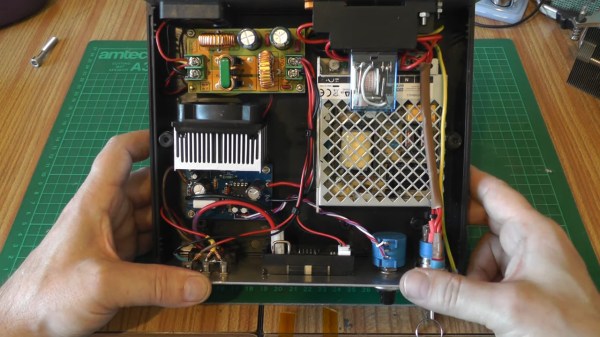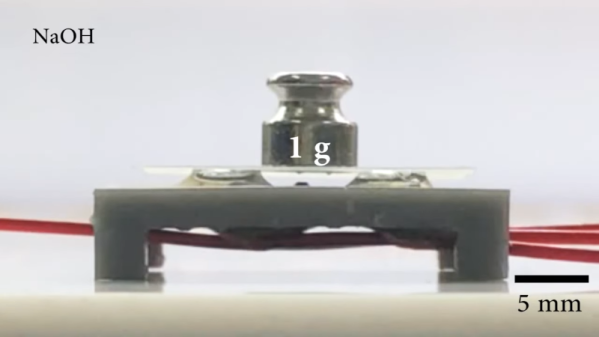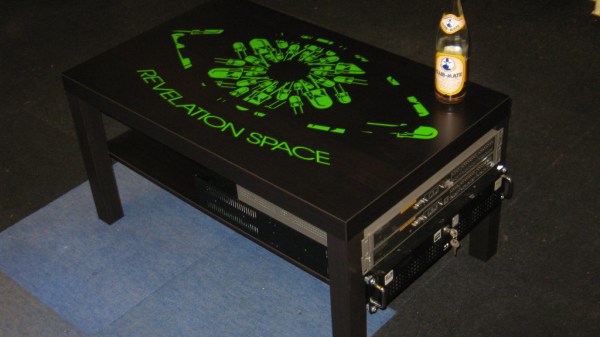It looks like the ongoing semiconductor shortage isn’t getting any better, and if the recent spate of computer thefts from semi trucks is any indication, it’s only going to get worse. Thieves seem to be targeting the Freightliner Cascadia, probably the most popular heavy freight truck on the road in North America today, with “smash and grab” thefts targeting the CPC4, or Common Powertrain Control module. These modules are sitting ducks — they’re easy to locate and remove, the chip shortage has made legit modules nearly unobtanium from dealers, and the truck won’t run without them. That’s driven the black market price for a CPC up to $8,000 or more, making them a tempting target. And it’s not only individual trucks parked in truck stop lots that are being hit; gangs are breaking into trucking company lots and bricking dozens of trucks in short order. So the supply chain problem which started the semiconductor shortage caused the module shortage, which drives the thieves to steal modules and take trucks off the road, which only worsens the supply chain shortage that started the whole thing. Nice positive feedback loop.
Adjustable Workholding For Honeycomb Tables, With A Bit Of DIY
Honeycomb tables are often found on laser cutters, where they provide a way for work material to be laid flat while not interfering with things like airflow. This leads to a cleaner laser cut and a nicer finish, but if one’s work depends on precise positioning and placement, they leave something to be desired because there’s no good way to attach rails, jigs, or anything of the sort in an easy and stable fashion.
 The solution [Ed] found for this was to make himself some adjustable offset stops designed to fit into his laser cutter’s honeycomb table. Each consists of a laser-cut disc of wood, which is screwed off-center into an acetal “plug” sized to fit into the vertical gaps in the honeycomb table. This allows each disc to be rotated to fine-tune positioning. With the help of some T-shaped pegs that are also sized to fit into the honeycomb table, [Ed] has all he needs to fix something like a workpiece or jig into a particular and repeatable position.
The solution [Ed] found for this was to make himself some adjustable offset stops designed to fit into his laser cutter’s honeycomb table. Each consists of a laser-cut disc of wood, which is screwed off-center into an acetal “plug” sized to fit into the vertical gaps in the honeycomb table. This allows each disc to be rotated to fine-tune positioning. With the help of some T-shaped pegs that are also sized to fit into the honeycomb table, [Ed] has all he needs to fix something like a workpiece or jig into a particular and repeatable position.
The whole thing depends on a friction fit, so the sizing of the plug needs to match a particular honeycomb table’s construction. We think this makes it a good match for 3D printing, as one can measure and print plugs (perhaps employing the Goldilocks approach) that fit with just the right amount of snug.
Honeycomb tables are fantastic for laser cutting, but if you find yourself in a pinch for a replacement, an old radiator can make a pretty decent stand-in.
Laser Driver Design Keeps Safety First
[Les] from [Les’ Lab] has designed a driver for laser diodes up to 10 watts, and decided to show us how it operates, tells us what we should keep in mind when designing such a driver, and talks about laser safety in general. This design is an adjustable current regulator based on the LM350A, able to provide up to 10 watts of power at about 2 volts – which is what his diode needs. Such obscure requirements aren’t easily fulfilled by commonly available PSUs, which is why a custom design was called for.
He tells us how he approached improving stability of the current regulation circuit, the PCB design requirements, and planning user interface for such a driver. However, that’s just part of the battle – regulating the current properly is important, but reducing the potential for accidental injuries even more so. Thus, he talks extensively about designing the driver circuit with safety in mind – using various kinds of interlocks, like a latching relay circuit to prevent it from powering up as soon as power is applied.
Relax And Enjoy This Simple Drone Synthesizer
You’d think that a synthesizer that makes as much noise and sports as many knobs as this one would have more than a dozen transistors on board. Surely the circuit behind the panel is complex, and there must be at least a couple of 555 timers back there, right?
But no, the “Box of Beezz” that [lonesoulsurfer] came up with is remarkably simple. It takes inspiration from a [Look Mum No Computer] circuit called the “Circle Drone of Doom,” which used six switchable relaxation oscillators to make some pretty cool sounds. The Box of Beezz steps that up a bit, with four oscillators in three switchable banks in the final version. Each oscillator has but one transistor with a floating base connection and a simple RC network on the collector. The sawtooth outputs of these relaxation oscillators can be adjusted and summed together, resulting in some surprisingly complex sounds. Check out the video below for a bit of the synth’s repertoire — we’d swear that there are points where we can hear elements of the THX Deep Note in there.
We poked around a bit to understand these oscillators, and it looks like these qualify as avalanche relaxation oscillators. [lonesolesurfer]’s notes indicate that SS9018 transistors should be used, but in the photos they appear to all be 2N4401s. We’re not sure how long the transistors will last operating in the avalanche mode, but if they quit, maybe some neon tubes would work instead.
Continue reading “Relax And Enjoy This Simple Drone Synthesizer”
Better Robots Through Gallium
In the movie Terminator 2, the T-1000 robot was made of some kind of liquid metal that could change shape among other interesting things. According to a chemical engineer at North Carolina State University, there may be something to the idea. [Michael Dickey] has been experimenting with gallium, a liquid metal, that scientists think may unlock a new generation of flexible devices.
The most common liquid metal is mercury, of course, and it has its uses. However, its toxicity has led to a reduction in its use. Gallium has low toxicity and also doesn’t easily evaporate. What can you do with it? Check out the video below to see a very simple demonstration of the liquid metal lifting a small — very small — weight with an electrical impulse.
Rackmount Hardware Placement Issues? IKEA LACK To The Rescue!
[hackbyte] reminds us about a classic hack that, even though we’ve seen floating around for over a decade, has somehow never quite graced our pages before. Many of us keep small home labs and even, at times, collections of servers that we’d be comfortable be calling mini-datacenters. However, if you use the ever-abundant 19″ switches, servers and other hardware, keeping these mounted and out of the way can be a thorny experience. Which leads us to, undoubtedly, unintentional – but exceptionally handy – compatibility between IKEA LACK table series and 19″ rackmount hardware.
The half-humorous half-informative wiki page on Eth0Wiki talks about this idea in depth, providing a myriad of examples and linking to pages of other hackerspaces and entities who implemented this idea and improved upon it. These tables look nice and fit anywhere, stack neatly when not in use, and you can put a bottle of Club-Mate on top. Aka, they’re the exact opposite of cheap clunky cabinets actually designed for rackmount you can buy, and cost a fraction of the price. What’s not to love?
You can buy a whole lot of cheap hardware in 19″, and arguably, that’s where you can get the best hardware for your dollar. Many a hackerspace has used these tables for makeshift infrastructure, permanent in all but intent. So, in case some of us missed the memo, now you are aware of yet another, underappreciated solution for mounting all these servers we get for cheap when yet another company replaces its equipment – or undergoes a liquidation. If LackRack hasn’t been on your radar – what have you been using for housing your rackmount hardware collection?
Wondering what to do with an old server? Building a powerful workstation is definitely on the list. Alternatively, you could discard the internals and stuff it full of Raspberry Pi!
Annotate PDFs On Linux With PDFrankenstein
On Windows and Mac machines, it’s not too troublesome to add text or drawings (such as signatures) to PDF files, but [Mansour Behabadi] found that on Linux machines, there didn’t seem to be a satisfying way or a simple tool. Being an enterprising hacker, [Mansour] set out to fill that gap, and the way it works under the hood is delightfully hacky, indeed.
The main thing standing in the way of creating such a tool is that the PDF format is a complex and twisty thing. Making a general-purpose PDF editing tool capable of inserting hyperlinks, notes, images, or drawings isn’t exactly a weekend project. But [Mansour] didn’t let that stop him; he leveraged the fact that tools already exist on Linux that can read and create PDF files, and tied them all together into what was at one point “a horrific patchwork of tools” which inspired the name pdfrankenstein.
The tool is a GUI that uses Inkscape and qpdf to convert a PDF page to an SVG file, set it as a locked background, then let the user add any annotations they desire, using Inkscape as the editor. After changes are made, the program removes the background, overlays the annotations back onto the originals, and exports a final file. Annotations can therefore be anything that can be done in Inkscape.
Curious about these and other tools for handling PDFs? We’ve shared some programs and tricks when we previously covered dealing with the PDF format in Linux.


















